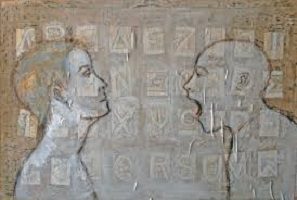Aesthetic function of language characteristics and example
Aesthetic function of language
The aesthetic function of language is its property of attracting attention to itself, thereby acquiring an autonomous value. In this sense, the word is simultaneously meaning and expression. That is to say, it has an objective meaning that is external to it and, at the same time, it has a subjective meaning, which goes beyond the objective.
Therefore, the word can say one thing and simultaneously show another completely different. This aesthetic function of language is widely studied by a branch of philosophy: aesthetics.
The term is derived from the ancient Greek term aishesis , which means sensation or perception, knowledge acquired through sensory experience.
On the other hand, this particular use of language is much more evident in the field of literature. In poetry, for example, literary verbal structures are used intensively to convey a multiplicity of meanings. Among them, we can mention color, sound, emotions and images of the material and concrete world. Aesthetic function of language characteristics
To fulfill this function of language, a series of resources are used. Some of them are similes, assonances, dissonances, fantasy, puns, and metaphors.
These are not for the exclusive use of literature. The range of possibilities where this aesthetic function of language develops includes films, television programs, and everyday language.
Characteristics of the aesthetic function of language
Emphasis on expressive value
The language has several functions. This can be used to convince (appellative function), communicate information about the concrete world (referential function), refer to aspects of the language (metalinguistic function), among others.
In the case of the aesthetic function of language, this gives priority to the expressive value of language. That is, it refers to their ability to express feelings or affections that an object, an idea or a being awaken.
This means that it does not neglect the significant value of language (its ability to refer to the outside world).
Preference of form over content
When you read a novel or a poem, you are experiencing the aesthetic function of language. In all these types of expressions, the intended purpose is to give aesthetic pleasure.
This is accomplished through the words themselves and through a conscious and deliberate arrangement that has a pleasant or enriching effect.
For this reason, this aesthetic purpose gives preponderance to form, rather than content. In this way, it is common, especially in literary contexts, that figurative, poetic, or playful language is used.
As already mentioned, among the resources used for this purpose are similes, metaphors, irony, symbolism, and analogies. Aesthetic function of language characteristics
On the other hand, when using words for artistic purposes, certain words are often selected and re-used to ensure that the desired effect is achieved.
Subject to cultural norms
The aesthetic function of language is related to the particular use of certain linguistic structures. However, it is cultural norms that ultimately determine the dominance of this function.
In general, language is in a relationship of interdependence with the culture of society. This reflects the beliefs, customs, values and activities of a particular group at a given time. It is not surprising that its aesthetic function is subject to all this cultural background.
Presence in all linguistic contexts
Although this assessment of the aesthetic function of language is most clearly evident in literature, it is also found in colloquial language. In the latter, it is perceived in the form of metaphors, word games, and other expressive resources of everyday speech.
Examples
- Since he was scolded, he has been walking with his tail between his legs.
- The computer runs smooth as silk.
- Eating like a bird will harm your health.
- Eat apple and you will be healthier.
- How would it ever be to reach the distant moons?
- He who takes care to be good has no time to do good.
- The arrow of your gaze pierces my heart.
- It was a short, short, thick, thick drizzle.
- If you want to move forward, you must take the first step.
- Rustic ladies sell more ripe fruits.
- The forest glows with greenery.
- In these votes, the candidates go head to head.
- Although the monkey dresses in silk, the monkey stays.
- Time creeps on. Aesthetic function of language characteristics
- It’s time for the chop.
